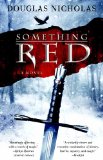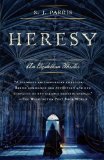Summary | Excerpt | Reviews | Beyond the book | Read-Alikes | Genres & Themes | Author Bio

Mystery series set in Britain's "Dark Ages" (the period between the fall of the Roman Empire and the Renaissance, now referred to by scholars as the Middle Ages) are not uncommon. They've been
popular with readers since Edith Pargeter (aka Ellis Peters) wrote the first
Brother Cadfael novel in 1977 depicting life in 1137. Tony Hays's book, set six centuries earlier, is a welcome addition to the genre.
The Killing Way is not the story of knights and chivalry one might expect
in a novel about King Arthur's time. Hays focuses on the historical Arthur and
his environs. He strips away the legends and myths surrounding the well-known
hero of the romantic age, portraying instead a warrior and leader who may have
existed around 500 CE. Indeed, the book is more historical fiction than mystery,
one of its major strengths being Hays's ability to convey a realistic sense of
time and place. The reader is transported to what amounts to a garrison town in
medieval Britain; there are no fine castles in this story.
The book's protagonist is Malgwyn ap Cuneglas, a former soldier who earned
Arthur's respect in times past for his keen powers of observation. The book's
jacket references the popular TV show CSI, but this gives an inaccurate
impression of Malgwyn's abilities. He simply understands more about death than
his peers (mostly due to the many battleground deaths he witnessed – and
caused). There's nothing anachronistic about his investigations or the tools at
his disposal. Hays reveals him to be insightful, independent and dedicated to
the truth, but at the same time damaged both emotionally and physically by prior
events. The result is a highly appealing character of great depth.
Hays avoids incorporating many features of the Arthurian legend into this
novel. Scholars agree that such elements as Lancelot and the Holy Grail are
later additions to the tale and have no basis in fact (see sidebar). He does,
however, do a very nice job of including some aspects of the legend in his
narrative, allowing the reader to see how components of the tale like Arthur's
round table and the sword in the stone may have passed from fact to myth over
the centuries.
Hays's writing is exemplary for the most part, but it does exhibit the
occasional flaw. The text can be too repetitive; for example the phrase "There's
more going on here than is apparent" or some variation thereof seems to occur
every few pages. In addition, several of the death scenes are overly
melodramatic, with characters having ample opportunity to soliloquize before
passing into the great beyond. Finally, from time to time the dialog strikes the
reader as out of place – modern English with a "thou" thrown in here and there
to make it seem more authentic. Fortunately, these lapses do little to lessen the reader's enjoyment of the novel.
Overall The Killing Way is entertaining and will leave readers eagerly
awaiting the promised sequel. It's sure to appeal to those who love a good
mystery, as well as to historical fiction aficionados.
The Divine Sacrifice, a follow-up to The Killing Way, comes out on March 30, 2010. It continues the story of Malgwyn ap Cuneglas. Arthur and Malgwyn are called to the abbey of Glastonbury to settle a matter of great political importance - tin is being mined for export to the Empire. While there, Malgwyn and Arthur meet St. Patrick, a legend in the Church who is there on a mission of his own, to root out the heresy of Pelagius. When an aged monk is found cruelly murdered in his cell, Malgwyn is set with a problem that will test his skills as an investigator. His search for the truth may uncover a conspiracy that could endanger the kingdom.
![]() This review was originally published in The BookBrowse Review in May 2009, and has been updated for the
March 2010 edition.
Click here to go to this issue.
This review was originally published in The BookBrowse Review in May 2009, and has been updated for the
March 2010 edition.
Click here to go to this issue.

If you liked The Killing Way, try these:

by Douglas Nicholas
Published 2013
An intoxicating and spirited blend of fantasy, mythology, and history, Something Red features the most fascinating of characters, as well as an epic snowstorm that an early reader described as "one of the coldest scenes since Snow Falling on Cedars."

by S.J. Parris
Published 2011
Masterfully blending true events with fiction, this blockbuster historical thriller delivers a page-turning murder mystery set on the sixteenth-century Oxford University campus.
Every good journalist has a novel in him - which is an excellent place for it.
Click Here to find out who said this, as well as discovering other famous literary quotes!
Your guide toexceptional books
BookBrowse seeks out and recommends the best in contemporary fiction and nonfiction—books that not only engage and entertain but also deepen our understanding of ourselves and the world around us.